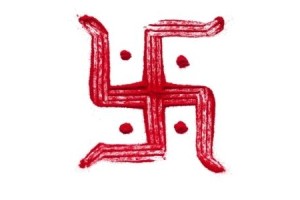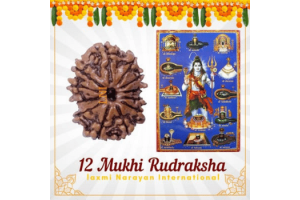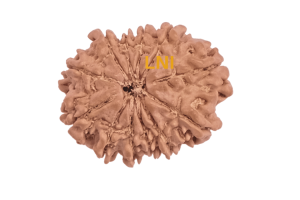Importance of Ganesha Worship
-800x350.png)
वक्रतुण्ड महाकाय सूर्यकोटि समप्रभ।
निर्विघ्नं कुरु मे देव सर्वकार्येषु सर्वदा॥
Worshiping
Lord Ganesha is an important aspect of Hinduism, and He is one of the most
widely worshipped deities in the religion. Here are some reasons why Lord
Ganesha is worshipped:
Lord
Ganesha is the remover of obstacles, and is believed to provide protection and
guidance to his devotees. His blessings are sought before beginning any new
venture or undertaking.
Ganesha
is also known as the lord of wisdom, knowledge, and learning. He is considered
the patron of arts and sciences, and is often worshipped by students and
scholars to seek his blessings for success in their studies.
Ganesha
is also believed to be the lord of new beginnings, and is often invoked during
important ceremonies like weddings and housewarming rituals to bless the
occasion and remove any obstacles.
Ganesha
is a popular deity among people of all ages, and his worship is seen as a way
to foster devotion, faith, and spiritual growth.
Ganesha
is also associated with abundance, prosperity, and good fortune, and is often
worshipped for these reasons as well.
Overall,
worshiping Lord Ganesha is considered a way to seek his blessings and guidance,
and to remove any obstacles that may come in the way of one's spiritual or
material progress. His worship is an important part of Hindu tradition and is
carried out with great devotion and reverence.
Performing
a Ganesha puja is an important aspect of Hindu worship and can be carried out
at home or in a temple. Here are some things to keep in mind to take care
during Ganesha Puja:
Purity
and cleanliness are essential when performing a puja. Wash your hands and feet
before starting the puja, and ensure that the puja room and the items used in
the puja are clean and free from dust and dirt.
It
is important to be respectful and show reverence during the puja. Avoid eating
or drinking during the puja, and dress appropriately in modest and clean
clothing.
Use
fresh flowers and other items for the puja, and avoid using wilted or old
flowers. Offerings made during the puja should be fresh and of good quality.
Chanting
of mantras is an important aspect of the puja. Ensure that you know the correct
pronunciation of the mantras and chants before starting the puja.
Follow
the sequence of the puja as per the tradition and custom. If you are not sure
of the sequence, you can seek guidance from a priest or an experienced person.
Be
mindful of the fire used in the puja. Ensure that the fire is contained in a
safe and secure place and that it is not left unattended.
After
the puja, distribute the prasad (blessed food) to family members and guests.
Prasad should be consumed with respect and gratitude.
Overall,
performing a Ganesha puja requires care, attention to detail, and reverence for
the deity. By following these guidelines, you can ensure that the puja is
conducted in a respectful and meaningful manner.
Here
is a general guideline on how to do a Ganesh Puja:
Clean
the Puja area: Clean the area where the puja is to be performed, and decorate
it with fresh flowers and rangoli.
Take
a bath and wear clean clothes before starting the puja.
Place
the Ganesha idol: Place the idol of Lord Ganesha in the center of the puja area
on a small platform or altar.
Light
the ghee lamp and incense sticks. After this, take the resolution of worship
(Sankalpa).
Then
after meditating on Ganesha, invoke him.
After
this give a bath to Ganesha. First bathe with water, then Milk, curd, honey,
Ghee, Sugar, Panchamrit (mixture of milk, curd, ghee, honey and sugar) and then
with pure water. Clean idol with a cloth.
Now
offer clothes/Mauli to Ganesh ji.
After
this, offer vermilion, sandalwood, flowers and garlands of flowers on the idol
of Ganapati.
Offering
Durva (grass) to Lord Ganesha is considered an auspicious practice in Hinduism,
especially during Ganesh Chaturthi and other Ganesha-related festivals.
There
are several reasons why Durva is offered to Ganesha:
According
to some Hindu texts, Durva grass represents prosperity and is believed to
attract positive energy and good fortune.
It
is said that Durva grass has the power to purify the atmosphere and ward off
negative energies, which is why it is offered during pujas and rituals.
Lord
Ganesha is also known as the lord of the animals, and Durva grass is considered
to be the food of cows. Therefore, offering Durva grass to Ganesha is believed
to please him and symbolizes respect for all living beings.
In
some versions of Hindu mythology, it is said that the three blades of Durva
grass represent the three qualities of goodness (sattva), passion (rajas), and
ignorance (tamas), which Ganesha is believed to have control over.
Overall,
offering Durva grass to Ganesha is considered a way to show devotion and seek
blessings for prosperity and success, as well as to seek his protection and remove
any obstacles in one's life.
Offering
Durva (grass) to Lord Ganesha is a common practice during Hindu puja or
worship. Here are the steps for offering Durva to Ganesha:
First,
take a few blades of fresh Durva grass and wash them clean with water.
Next,
arrange the Durva grass in your hand, holding it by the tips, so that the
stalks are pointing towards the right.
Offer
the Durva grass to the idol of Lord Ganesha or the picture of Ganesha that you
have placed in your puja room. Place the Durva grass at his feet or near the
idol.
While
offering the Durva grass, chant the Durva grass mantra "Om Durvā Devaya
Namaha" (ॐ दुर्वादेवाय नमः)
three times.
It
is important to note that Durva grass should be fresh and not wilted or dry.
Also, make sure to use an odd number of blades of Durva grass, typically three
or five, as even numbers are considered inauspicious in Hinduism.
Offer
sacred scented incense
Offer
sweets (Laddu /Modak) and fruits.
Chant
the Ganesha Mantras: Chant the Ganesha mantras like "Om Ganeshaya
Namah" or "Vakratunda Mahakaya" or any other Ganesha mantras
with devotion and concentration.
Offer
Aarti and seek blessings: Offer aarti to Ganesha, seek his blessings
End
the puja: After the puja is complete, distribute the prasad among family
members and guests.
The
use of Tulsa is prohibited in the worship of Lord Ganesha.
Don't
wear black clothes in the worship of Ganesha even by mistake. Red or white
colored clothes should be worn in their worship.
Three
idols of Ganesha should not be kept in your house. On bringing a new idol, the
old idol should be made to flow.
The
idol of Ganesha should never be kept in the dark. It is not auspicious to see
Ganesha in the dark.
While
offering Akshat in the worship of Ganesha, keep in mind that it should not be
broken.
Offering
dry and stale flowers in the worship of Ganesha is considered inauspicious. By
doing this, poverty resides in the family.
Overall,
performing a Ganesha puja is a way to show reverence and devotion to Lord
Ganesha and seek his blessings. By following these guidelines, you can perform
the puja with sincerity and devotion. It is important to note that the mantras
and specific rituals may vary based on the traditions and customs followed by
your family or community.

-300x200.png)







